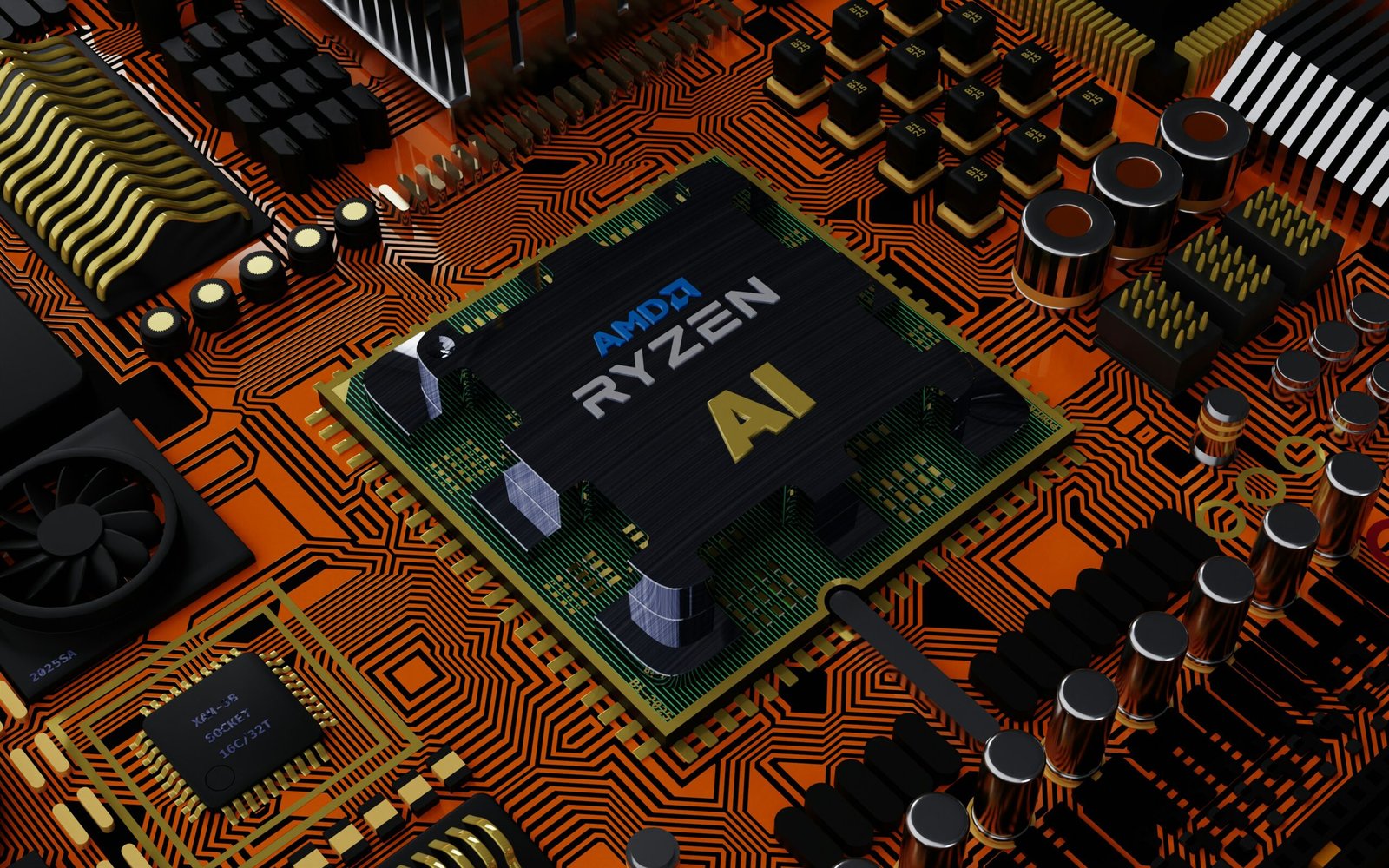The Benefits of Using Headless CMS: Flexibility and Scalability for Modern Websites
 Photo by Lavi Perchik on Unsplash
Photo by Lavi Perchik on Unsplash A Headless Content Management System (CMS) represents a paradigm shift in the way digital content is managed and delivered. Unlike traditional CMS platforms, which integrate both the backend and frontend within a single system, a headless CMS employs a decoupled architecture. This means that the backend, where content is created, stored, and organized, is separated from the frontend, where content is presented to end-users.
In a traditional CMS, the system handles both the management of content and its presentation layer. Think of platforms like WordPress and Drupal, which are all-inclusive packages that manage databases, user interfaces, and site structures in a tightly-knit environment. While effective for many use cases, such traditional systems can often appear restrictive when attempting to adapt content across multiple channels and devices.
Conversely, a headless CMS offers unparalleled flexibility by allowing developers to break free from these constraints. It concentrates purely on content management, operating as a backend repository for content and relying on APIs (Application Programming Interfaces) to deliver the content to various frontends. These APIs facilitate seamless integration with any frontend framework, making it ideal for building modern websites, apps, and other digital platforms that require tailored and consistent content delivery across varied interfaces.
This decoupled structure enables the use of different technologies for the frontend and backend without compatibility concerns, thereby achieving flexibility and scalability. Developers are empowered to choose best-in-class tools and frameworks for individual components of a digital project. For instance, a headless CMS can supply content to a web application built using React, a mobile app built with Swift, and an IoT device interface—all simultaneously and consistently.
By decoupling content management from content delivery, a headless CMS not only provides unparalleled flexibility but also prepares the foundation for future-proofing digital ecosystems, making it an ideal choice for modern, dynamic, and scalable web presences.
Understanding Flexibility in Headless CMS
One of the major advantages of utilizing a headless CMS is its innate flexibility. Unlike traditional content management systems, a headless CMS decouples the content repository from the presentation layer. This separation allows for seamless content delivery across a diverse range of digital platforms, including websites, mobile apps, and IoT devices, all through the use of APIs. By enabling such versatility, a headless CMS ensures that content reaches the intended audience regardless of the medium or device being used.
Another significant aspect of flexibility within a headless CMS lies in the freedom it offers developers. The headless approach empowers developers to select their preferred frontend technologies and frameworks without being constrained by the limitations imposed by monolithic systems. This freedom results in the creation of highly customizable and performant digital experiences tailored to specific project requirements. Whether leveraging React, Angular, Vue.js, or any other framework, developers can build frontend interfaces that precisely align with the desired aesthetics and functionality.
In addition to technological freedom, headless CMSs facilitate adaptability to emerging trends and technologies. As consumer preferences evolve and new devices and platforms emerge, businesses using headless CMSs can swiftly pivot and integrate their content with the latest innovations. This agility ensures a consistent and engaging user experience, irrespective of how users choose to interact with the content.
Furthermore, the separation of content management and content delivery simplifies the process of site redesigns and updates. Developers can rework the presentation layer or integrate new frontend technologies without disrupting the content stored in the backend. This modular approach fosters an environment that emphasizes continuous improvement and scalability, critical for modern websites aiming to maintain relevance and competitive edge.
Scalability Advantages of Headless CMS
The scalability of a headless CMS (Content Management System) presents a significant advantage for modern websites. Its decoupled architecture separates the backend from the frontend, enabling a more streamlined content delivery process. This separation offers an optimized pathway for handling high traffic volumes, as it allows the backend to be scaled independently from the frontend. For businesses experiencing rapid growth or sudden traffic spikes, the ability to easily scale up backend infrastructure ensures consistent performance without service interruptions.
One of the key aspects of scalability in a headless CMS is its ability to integrate seamlessly with various third-party services. Whether it’s a CRM, e-commerce platform, analytics tool, or any other external application, a headless CMS can manage these integrations efficiently. This ability not only enhances the website’s functionality but also contributes to a more robust digital ecosystem that can adapt gracefully to evolving business needs.
Furthermore, the flexibility of a headless CMS to support the rapid expansion of digital properties is unparalleled. Businesses can effortlessly introduce new websites or digital channels without extensive reconfigurations or duplications in the backend. This is particularly beneficial for enterprises managing multiple digital touchpoints, as the headless CMS can act as a unified content hub, distributing content consistently across all platforms.
Additionally, a headless CMS ensures that performance is not compromised during scaling. By decoupling the content from its presentation, the system can leverage Content Delivery Networks (CDNs) and other performance-enhancing technologies to ensure fast load times and a seamless user experience, even under heavy loads. As businesses scale their operations, these features prove critical in maintaining a high-quality, responsive digital presence.
In conclusion, the scalability benefits of a headless CMS are evident in its ability to handle high traffic volumes, integrate with multiple third-party services, and support rapid expansion. Its decoupled architecture and performance optimization capabilities make it an ideal choice for modern businesses seeking to future-proof their digital infrastructure.
Improved Security with Headless CMS
One of the most significant advantages of using a headless CMS is the enhanced security it provides. Traditional Content Management Systems (CMS) are often monolithic, combining both the front-end and back-end functionalities in a single system. This integration, while convenient, also expands the potential attack surface, exposing more vulnerabilities to hackers. In contrast, a headless CMS separates content management from the delivery layer, resulting in a more secure structure.
By decoupling the CMS from the presentation layer, headless systems significantly reduce the potential entry points for malicious attacks. Hackers find it more challenging to exploit vulnerabilities because the front-end and back-end communicate through APIs, which can be rigorously secured. Moreover, the front-end code is often stored on separate servers or platforms, making direct access to your back-end systems much harder. This setup ensures that even if the delivery layer is compromised, the core content remains safeguarded.
Another critical aspect of headless CMS security is the ease with which updates and patches can be deployed. Since the CMS operates independently of the front-end, developers can implement security measures without the risk of disrupting the user interface or interfering with the website’s functionality. This rapid adaptability to emerging threats ensures that the system remains resilient against the latest forms of cyberattacks.
Moreover, headless CMS platforms often include robust built-in security features. These may consist of advanced authentication mechanisms, user role management, and secure API gateways, all of which contribute to a more fortified digital environment. Regular security audits and the proactive application of patches further enhance the system’s capability to ward off potential threats.
In essence, the structural advantages of a headless CMS, combined with modern security practices, provide a more secure foundation for managing and delivering web content. This approach not only offers peace of mind but also enhances the overall integrity of your digital assets.
“`html
Cost-Efficiency in Content Management
When businesses evaluate content management systems, cost-efficiency is a critical factor. Adopting a headless CMS can present numerous financial advantages, offering long-term cost savings that traditional CMSs might not provide.
One of the primary cost-saving aspects of a headless CMS is the reduction in hosting and infrastructure expenses. Traditional CMSs require extensive resources, often leading to significant costs related to server maintenance and management. In contrast, a headless CMS operates with a decoupled frontend and backend, allowing businesses to leverage more modern, lightweight frameworks that utilize fewer resources. This efficient resource usage translates to lower hosting bills and reduced infrastructure overhead.
Another key advantage is the reduced maintenance costs associated with centralized backend management. Since all content is stored and managed centrally in a headless CMS, updates and maintenance tasks are simplified. This centralized system minimizes the need for repetitive updates across different platforms and devices, leading to fewer hours spent on maintenance and decreasing the likelihood of costly downtime or errors.
Moreover, the headless architecture facilitates lower development costs. By employing modern frameworks and APIs, developers can create highly customizable frontend experiences without being tied to specific backend technologies. This flexibility enables the use of existing tools and libraries, speeding up the development process and reducing costs associated with proprietary software or specialized skills. Additionally, this flexibility allows organizations to adapt more rapidly to changing market needs, providing a competitive edge without investing significantly in new technologies or extensive retraining.
In essence, headless CMS offers a cost-effective solution for businesses looking to streamline their content management processes. By decreasing the need for extensive hosting infrastructure, simplifying maintenance through centralized backend management, and reducing development expenses with versatile frameworks, organizations can achieve sustainable cost-efficiency while maintaining high performance and adaptability.
Enhanced Collaborative Workflows
Headless CMS platforms offer substantial benefits in fostering enhanced collaborative workflows among content creators, developers, and marketers. Unlike traditional CMS solutions that often constrain users within a single integrated system, a headless CMS decouples the backend content repository from the frontend presentation layer. This segregation allows various stakeholders to work more efficiently and independently within their respective domains.
For content creators, headless CMS platforms provide user-friendly interfaces that enable effortless creation, management, and publication of content without needing technical support. Tools such as WYSIWYG editors, drag-and-drop functionality, and rich text editors empower non-technical team members to contribute effectively, bypassing the usual bottlenecks associated with traditional systems.
Developers, on the other hand, benefit immensely from the flexibility and scalability that headless CMS platforms offer. By leveraging APIs, developers can pull content from the CMS and render it on any device or platform, whether it’s a website, mobile app, or IoT devices. This independence from rigid templates allows developers to exercise their creativity and craft custom frontend experiences without being restricted by the CMS’s intrinsic limitations.
Marketers also find headless CMS advantageous as they can independently manage campaigns, segment audiences, and perform A/B testing without waiting for development cycles. Enhanced workflows and automation tools integrated into headless CMS platforms facilitate streamlined content updates, making it easier to quickly adapt marketing strategies in response to evolving trends and user behaviors.
Moreover, headless CMS platforms typically incorporate robust project management, version control, and collaborative tools to support efficient teamwork. Features like multi-language support, role-based permissions, content approval workflows, and integration with project management tools (e.g., Jira, Trello) ensure that content cycles are managed seamlessly, reducing redundancies and miscommunications. These collaborative advantages translate into higher productivity, faster time-to-market, and ultimately, an optimized user experience.
Real-world Use Cases and Success Stories
Headless CMS solutions have empowered numerous organizations across various industries to drive innovation and streamline content management processes. To illustrate the tangible benefits of headless CMS, we delve into specific real-world scenarios where companies have reaped significant rewards through this technology.
One noteworthy example is the case of The New York Times. As one of the world’s leading news agencies, they faced the challenge of delivering fresh, high-quality content to millions of readers across different platforms, from traditional web browsers to mobile applications and even smart devices. By transitioning to a headless CMS, The New York Times was able to decouple their content from presentation, allowing them to quickly repurpose and distribute articles, multimedia, and interactive features effortlessly across multiple channels. This shift not only improved their content delivery speed but also enhanced the user experience by providing consistency and reliability, irrespective of the platform being used.
Another success story comes from Nike, the global sportswear giant. Nike required a robust system to manage their extensive catalog of products and digital content across their e-commerce platforms worldwide. By implementing a headless CMS, Nike could seamlessly integrate with various front-end technologies and e-commerce platforms, enabling them to personalize customer experiences and rapidly launch marketing campaigns. The flexibility and scalability of the headless CMS allowed Nike to maintain a cohesive brand message while adapting content to meet local market demands efficiently.
In the healthcare sector, Sanford Health leveraged a headless CMS to unify their content management efforts across numerous websites and applications serving patients, healthcare professionals, and administrative staff. The previous monolithic CMS systems were inadequate in handling the vast amount of dynamic and personalized content required. With a headless architecture, Sanford Health achieved a centralized content repository that delivered consistent and up-to-date information, improving both patient engagement and internal efficiency. This modernization also facilitated compliance with regulatory standards, a critical factor for healthcare organizations.
These examples underscore the transformative impact of adopting a headless CMS. By enabling flexibility, enhancing scalability, and fostering seamless content distribution across multiple channels, headless CMS solutions have proved instrumental in advancing organizational objectives and elevating user experiences.
Conclusion and Future Outlook
Throughout this blog, we have discussed the numerous advantages of adopting a headless CMS for modern websites, emphasizing the enhanced flexibility and scalability it brings. Headless CMS solutions decouple the content repository from the presentation layer, allowing for seamless multi-channel content delivery. This decoupling effectively addresses the evolving needs of businesses seeking to provide a consistent and personalized user experience across various platforms.
In the realm of web development, we observe an undeniable shift towards more agile and personalized content management approaches. Headless CMS platforms are at the forefront of this transition. They support an API-first architecture, enabling developers to use their preferred tools and frameworks for front-end development. As a result, integrating new technologies becomes more straightforward, fostering innovation and adaptability.
Looking ahead, the future of headless CMS appears promising with several emerging trends and potential advancements. Artificial Intelligence (AI) and Machine Learning (ML) integrations are expected to revolutionize content personalization and automation, enhancing user engagement and conversion rates. Additionally, improvements in GraphQL adoption will further streamline API interactions, making data retrieval more efficient. The continued evolution of cloud-native solutions will also reduce costs and enhance performance, solidifying headless CMS as an optimal solution for enterprises of all sizes.
For businesses aiming to remain competitive in the digital landscape, transitioning to a headless CMS offers significant benefits. The capability to swiftly adapt to market demands, deliver content across various touchpoints, and implement new digital strategies is crucial in staying ahead of the curve. Businesses will likely find that a headless CMS not only meets their current needs but also provides a robust foundation for future innovations, ensuring long-term success in a rapidly changing digital world.
















Tidak ada komentar